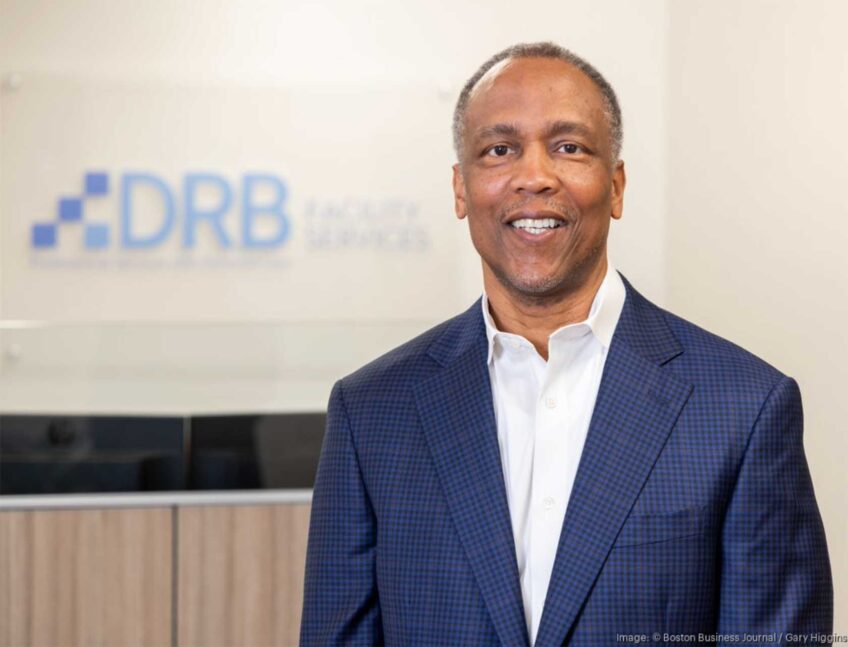Diversity’s Dilemma
Fulfilling and expanding the promise of an inclusive economy
As the benefits of an inclusive economy become evident — the research shows that greater diversity generates better thinking, innovation and competitive performance — you’d think there would be greater levels of participation by women and people of color in business.
But you’d be wrong.
Despite the fact that most people who enter the workforce are people of color — a number expected to grow — workplace and board diversity continue to lag. Despite the evidence and the fact that diversity proponents have made their case for decades, the demographics remain stubbornly the same: Across the business landscape — at every level, and throughout every industry — the numbers are flat. In Massachusetts, overall levels of diversity remain constant — from 2007 to 2011 they oscillated between 27 percent and 24.4 percent — among those filing reports with the Commonwealth Compact.
There is some progress, thanks to changes in the regulatory and operating environment. In 2009, the Securities and Exchange Commission issued a diversity disclosure ruling that went into effect in 2010. Many large pension funds (such as California’s and New York City’s) and money managers (such as Domini Social Investments) include diversity as a key criterion for competitiveness and financial performance. They also use their role as shareholders to push diversity laggards into doing more. In 2015, they filed 46 proxy resolutions on diversity issues, which represent 9 percent of all environmental, social and governance (ESG) proposals.
There also is a host of global, national, regional and local frameworks that include diversity as a core metric of a vibrant, sustainable economy. There are even organized efforts to get men involved to promote women’s advancement.
Yet white males continue to dominate business ranks, particularly at the higher echelons. They also get paid more. On average, women earn 79 cents to every dollar men earn, and the pay gap gets bigger with age; it’s even worse for women of color. (The difference is narrower between younger workers.)
Since the SEC’s ruling, five years’ worth of data now are available, which show that the levels of women and people of color occupying managerial, executive and board ranks still have not changed much. Einstein said the definition of insanity is doing the same thing over and over again and expecting different results. It’s time for other strategies to be added to the mix.
So much for so little: The immoral bet
Why is it that diversity’s promise has yet to be filled, even as definitions of diversity continue to expand — including not just gender or race, but sexual orientation, gender identity, disability and even age?
Why so little progress, despite more than four decades of corporate commitments and ongoing efforts of activists, policymakers, regulators, researchers, lawmakers and shareholders?
By the Numbers: Diversity in Business
46: The total number of diversity resolutions filed by shareowners of publicly-traded companies in 2015, addressing board and workplace inclusion of women and people of color. Source: Sustainable Investments Institute, 2015.
26: The number of companies (except for Urban Outfitters) that received first-time board-level diversity resolutions. Source: Sustainable Investments Institute, 2015.
20: The total number of workplace diversity shareholder resolutions filed in 2015, affecting LGBT rights (17 proxy proposals) and EEO (3 proposals). Source: Sustainable Investments Institute, 2015.
79 cents: The average amount women working full time make, compared to every dollar men earn. In Massachusetts, women make 82 cents for every dollar men make. According to recent forecasts, women will not reach pay parity until 2058. Source: Bureau of Labor Statistics; American Association of University Women, 2015.
63 cents: The average amount African American women working full time make, compared to every dollar white men earn. Source: AAUW, 2015.
54 cents: The average amount Latina women working full time make, compared to every dollar white men earn.
Source: AAUW, 2015.
The argument is pretty clear, even as the vocabulary has varied. “Affirmative action,” “diversity” and “inclusion” are different words with the same overriding principle: Our economic systems, just as in public life, generally work better when there is broader participation, accountability and representation by and to the people who are affected by them. Diversity generates less “groupthink”, more creativity and competitive performance, along with a heightened capacity to design a future holding the right answers to questions we currently cannot foresee.
But why is it that, with widespread support for the idea of an inclusive economy — an idea that is consistent with our nation’s cherished ideals as well as the reality of our demographic future — making it real is something else altogether?
Forthcoming research will add further insights into why diversity has stalled. Already some researchers claim that inherited bias and the tyranny of the majority are culprits, however persuasive the business case. They say that absent mandatory disclosure, quotas or other stern disruptions, the composition of existing hierarchies of power will continue to hold sway. They also suggest that diversity arguments should feature moral and social dimensions, as well as a financial one.
Indeed, you could argue that a company that fails to fulfill its diversity commitments is making an immoral bet: that its choice to maintain the homogenous status quo is viewed as better than securing a more diverse workplace and board. It means that the company does not “want” women and people of color in their midst. The performance of companies that fail to integrate diversity into their business strategy should be measured against a demographic future in which whites are the minority.
Remedial action
So, what to do?
At the national level, the Paycheck Fairness Act (Senate Bill 84) would strengthen the Equal Pay Act of 1963 and the Fair Labor Standards Act so that everyone can be assured of equal work for equal pay.
Several states (Connecticut, Delaware, North Dakota, Oregon, Illinois, New York) have enacted equal pay laws, while legislation remains pending in the Massachusetts House (House Bill 1733) and Senate (Senate Bill 983). Similar legislation stalled in 21 other states.
Unbeknownst to many concerned citizens, shareholders continue to act, recognizing that it’s in their material financial interest as well as the right thing to do.
And numerous advocacy groups continue to pressure private sector actors and public policymakers to take action.
But getting better results lies somewhere between “education” and “engagement”, where the vast and sprawling diversity apparatus is linked to the voice and power of those who are directly impacted: that is, taxpayers, consumers, employees, shareholders and concerned citizens who stand to benefit the most from diversity’s promise, at local, regional, national and global levels.
For individuals as citizens and shareholders, that means letting lawmakers — nationally, regarding the Paycheck Fairness Act, and in Massachusetts, pending pay equity legislation — and asking asset owners — pension funds, local tax-exempt organizations with stock holdings, and money managers all are in a position to engage in corporate dialogue and vote on proxy resolutions — know you care about diversity, and want to see visible efforts and public accountability for tangible results.
As consumers, that means using purchasing power to promote businesses that demonstrate inclusive practices and are committed to social responsibility. As workers (would-be or current), it means learning how to negotiate better pay packages, and keeping up with efforts that support workplace and board diversity.
For institutions — companies, advocacy groups, policy and research entities — that means more transparency and monitoring of diversity progress and setbacks, why this is so, and maintenance of a positive pluralist organizational climate. It also involves outreach to more diverse groups of people to help advance an inclusive economy in which everyone has a place.
Network for change
No longer a stand-alone issue that involves corporate box-ticking and pricey public relations, true marketplace diversity builds a sense of belonging and community, to which everyone feels they can make a contribution.
Rising corporate stakeholder demands and expectations — connected to cultural and structural incentives and carefully targeted, evidence-based campaigns — can transform diversity’s dilemma into a mandate that helps make the inclusive economy a reality.
That means getting beyond silo or parochial thinking, and leveraging technology to forge new coalitions demanding greater transparency and results. With so many advocates promoting diversity — and grounding their arguments in scientific evidence — and so much at stake, not only is that a form of empowerment worth doing, it’s a form of empowerment within reach.






